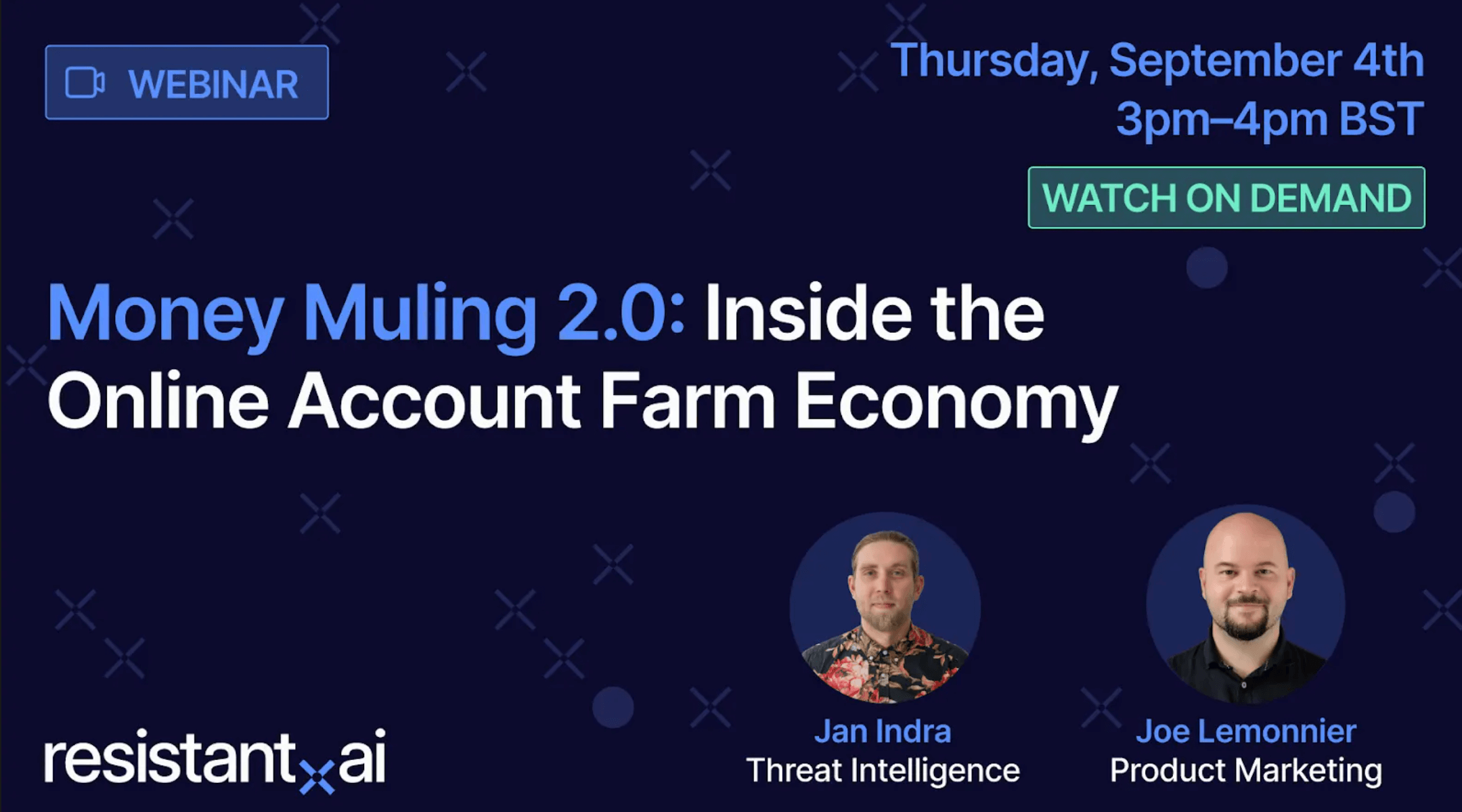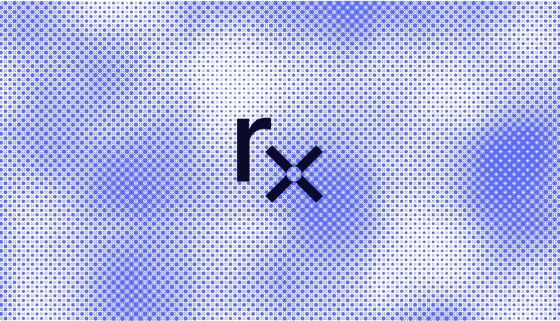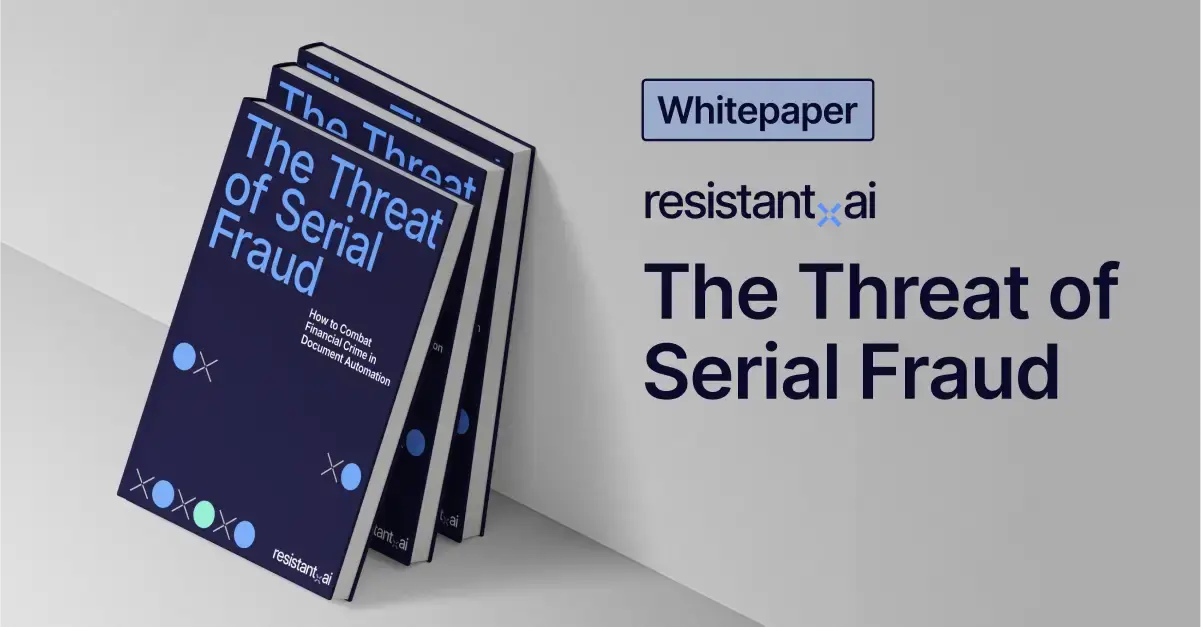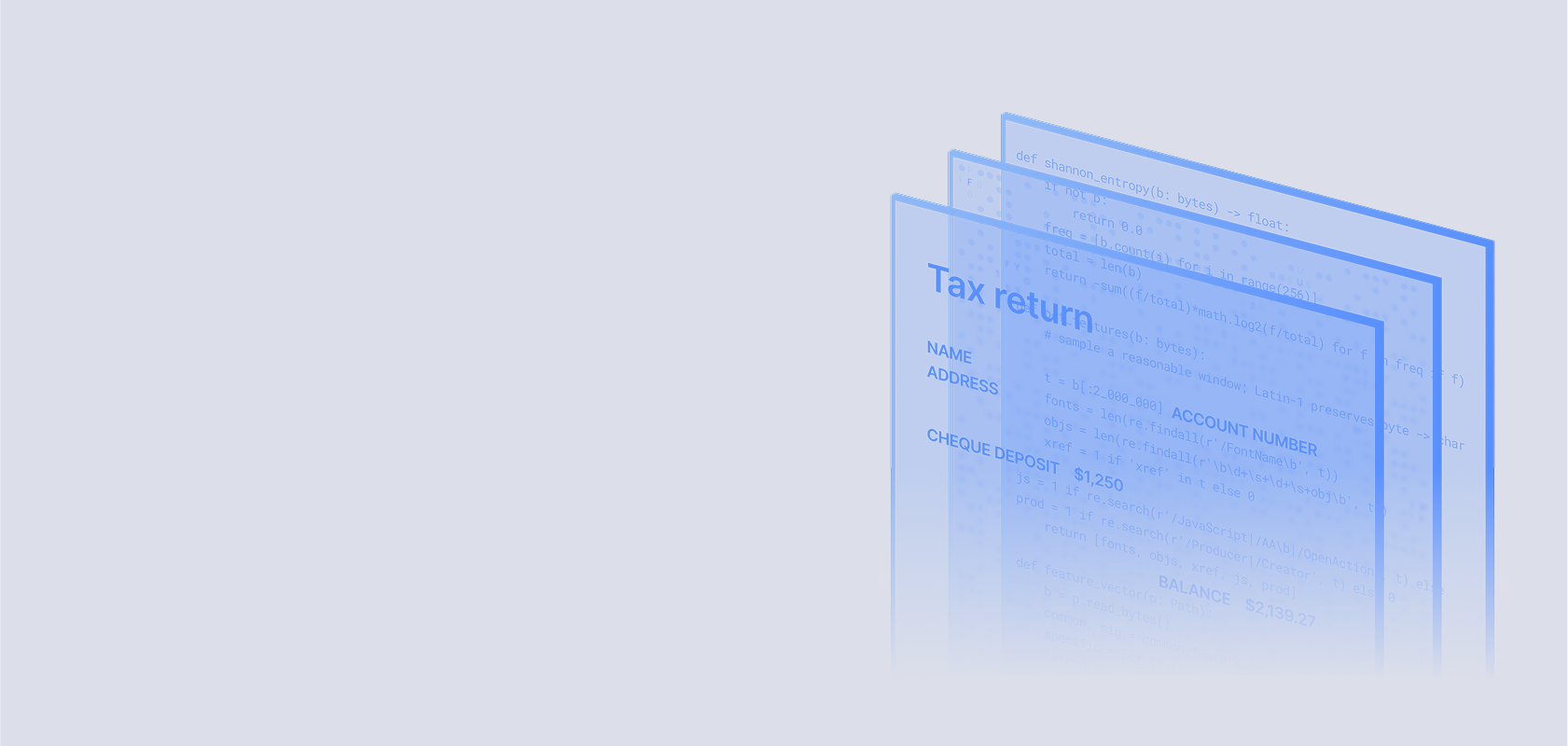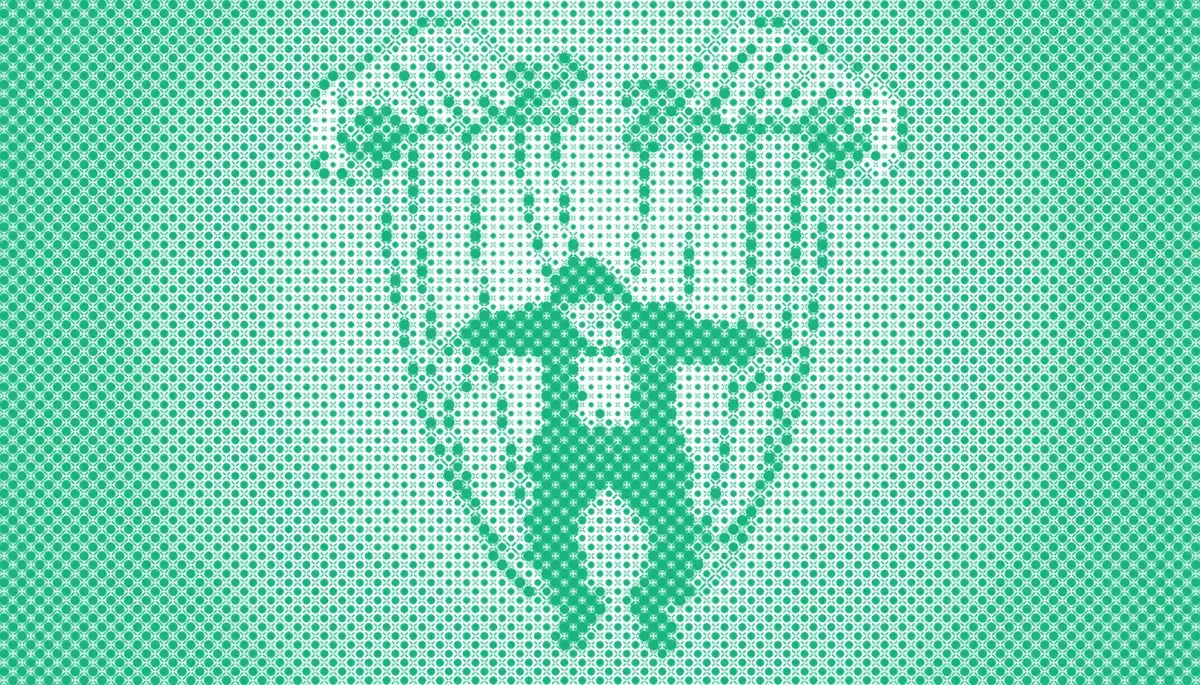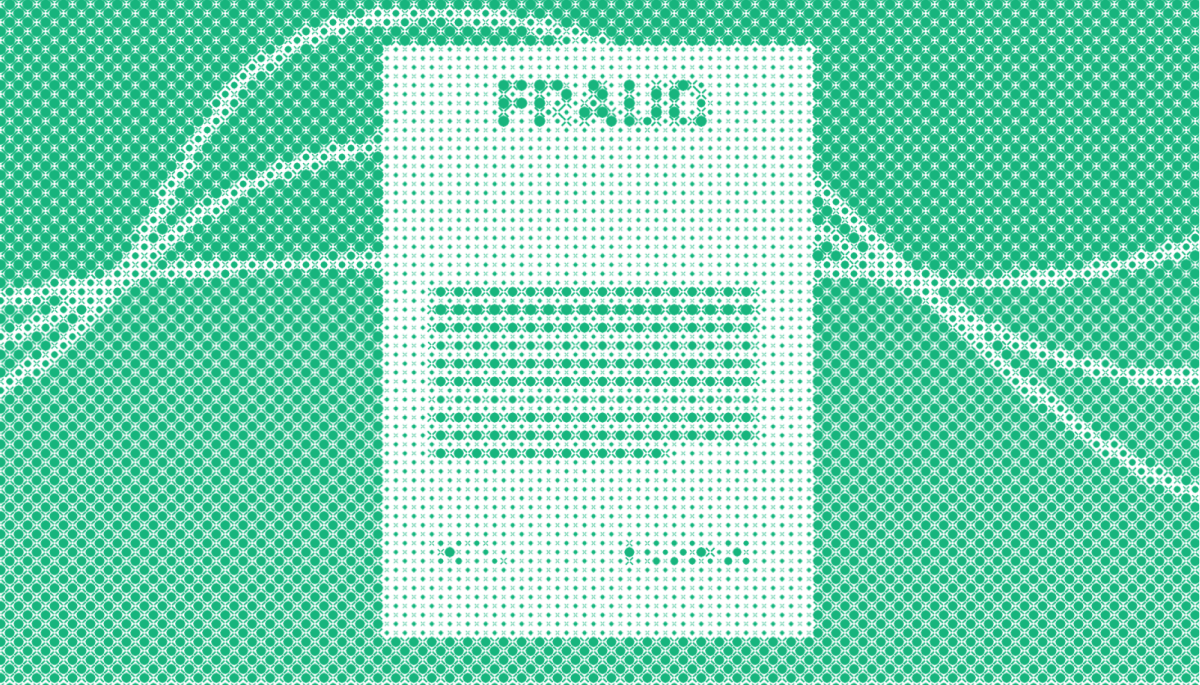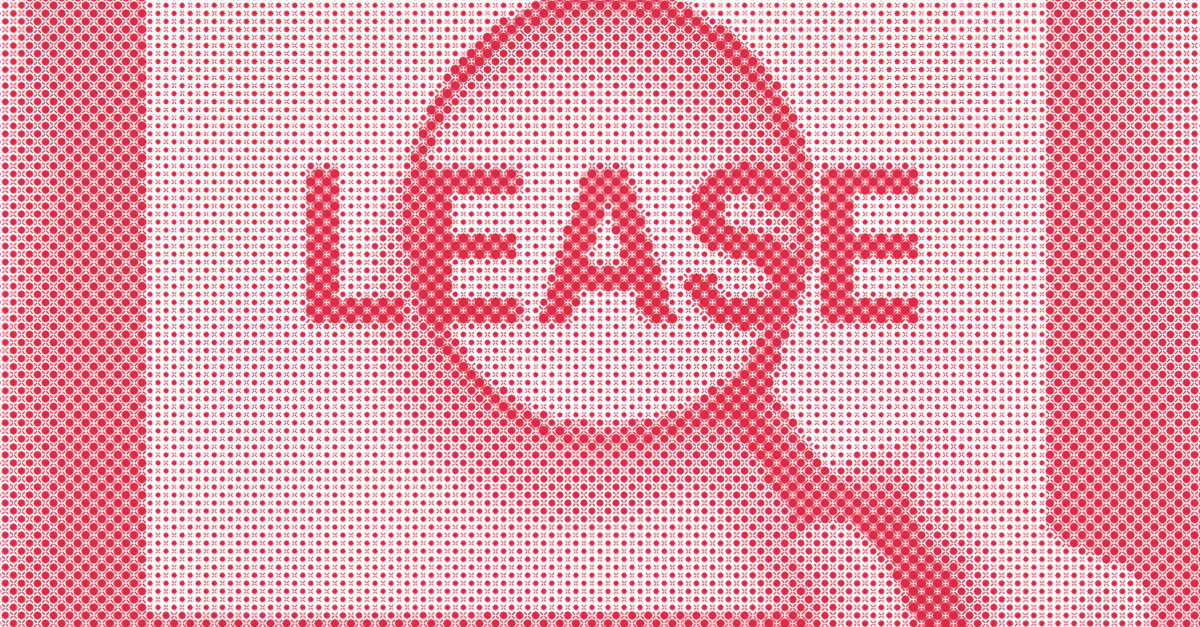Uncovering business loan fraud: A comprehensive guide
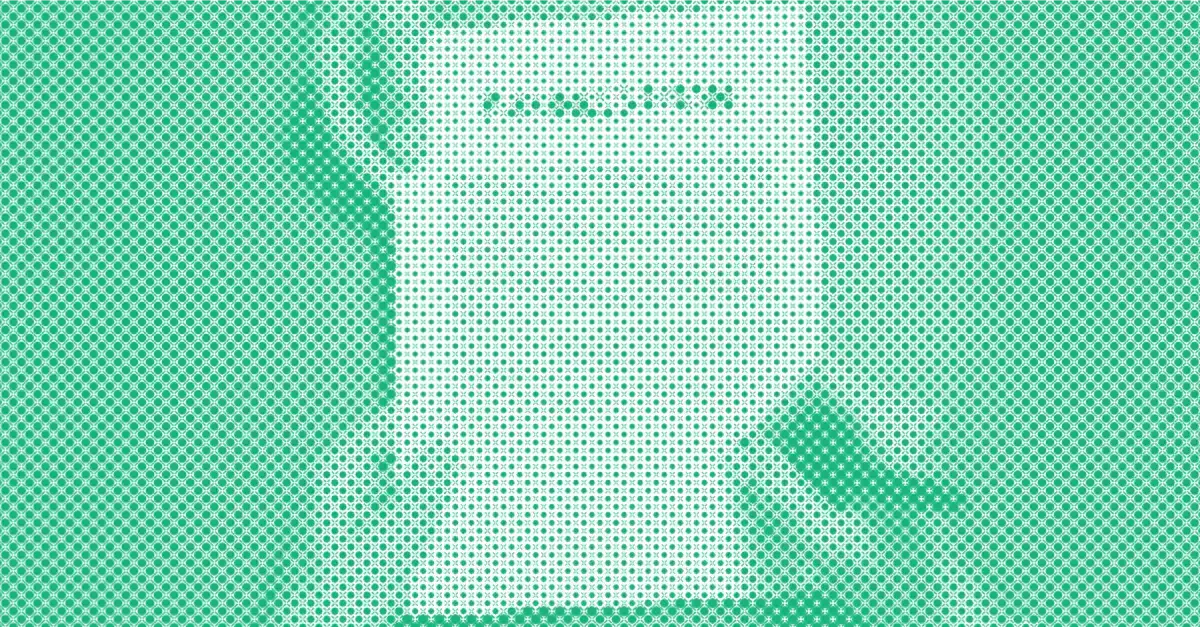


Trade is the bread and butter of the economy–yet, 59% of small businesses are struggling to make ends meet.
As a lender, this is just the beginning of a turbulent payment cycle. From late payments to writing off bad debts, the list goes on. Instead of generating revenue, financial institutions and digital lenders stop short at getting repayments.
This makes the business loan underwriting process vital for lenders to thrive.
Hence, lenders need to identify business loan application fraud from the very beginning.
Summary
Small and Midsize business lending fraud on the rise
With first-party individuals making up 75% of fraud cases for online lenders or pure-play lending groups, B2B lending has become much riskier than before. For lenders and financial institutions, the threat of business loan fraud from mortgage fraud to SBA frauds, and many others is rapidly rising with the latest technological advancements.
What are the different types of business loans?
Depending on the type of business, each financing option appeals to different owners. Below is a table of the most common types of business loans:
| SBA Loans | Micro Loans | Working Capital Loans |
| Term Loans | Invoice Factoring / Financing | Merchant Cash Advances |
| PPP Loan | Startup / Short-term Loans | EIDL Loan |
| Business Lines of credit | Commercial Credit | Personal Loans for Business |
| Mortgage Loans | Trade Financing | Commercial Real Estate Loans |
However, no matter the type of business loan, every single one of them is prone to business loan application fraud. From fraudulent SBA frauds to loan stacking, fintechs and lenders can be at risk of civil investigations for not conducting due diligence. Hence, lenders need to adopt a multi-faceted approach in business loan underwriting.
What is business loan underwriting?
Business loan underwriting refers to the credit risk assessment procedure where banks and financial service providers conduct a comprehensive review of the borrower and business to determine eligibility for funding.
How does the business loan underwriting process work?
For lenders, the business loan underwriting process works by assessing the top three risks ahead of time. These three broad categories of risks help underwriters understand what to look out for.
Here are the main types of risks associated with underwriting a business loan:
-
Credit risks: Credit risk refers to the possibility of a lender’s loss due to the borrower’s inability to repay the loan due to financial difficulties.
-
Fraud risks: Fraud risks refer to the possibility of monetary losses through financial crimes, reputational loss via data leaks, or material losses due to expenses incurred during damage control for a fraudulent activity.
-
Compliance risks: Compliance risk refers to a corporation’s potential exposure to legal, criminal, or financial exposure due to a lack of adherence to the industry laws and regulations.
Apart from assessing an applicant’s creditworthiness, underwriting a business loan also serves as an analytical approach to prevent business loan application fraud. No matter the type of loan or business, most underwriters incorporate the same three Cs–concepts for underwriting to measure probable risks.
How to underwrite business loans using the 3Cs?
The 3Cs of underwriting guidelines for commercial loans are capacity, collateral, and character. Its main purpose is to use a variety of factors to help underwriters ascertain the creditworthiness of an applicant before approving their business for funding.
When done properly, underwriting a business loan can also act as an effective deterrent against commercial lending fraud. Be it the commercial loan underwriting process or an SBA loan underwriting process, the underwriter always follows these three main concepts:
Capacity
The capacity of a borrower signifies the financial ability to meet existing commitments. This is derived by tallying the monthly income and debt against each other to determine the debt-to-income ratio. It primarily focuses on these 4 factors:
-
Income consistency: An SBA underwriter assesses the consistency of incoming revenue to determine the reliability and repayment ability of the borrower.
-
Debt-to-income ratio: As aforementioned, the comparison of debt and income signifies the capacity to pay–the lower the ratio, the higher the capacity for debt.
-
Employment history: The more stable the employment record is, the higher the repayment capacity of the borrower–which is usually applicable for mortgage loans.
-
Financial Assets: Cash, savings, property, and any other assets that can cover a few months of expenses highlight financial readiness and risk mitigation approaches.
Collateral
An SBA underwriter also determines the repayment capacity of a borrower through the loan-to-value ratio. Through the different types of collateral, the borrower provides security to the lender, decreasing the risk related to the loan. The more collateral one has to offer, the more favorable their terms and interest rates would be. These are the 3 types of collateral:
-
Real estate assets: commercial properties, personal homes, and land
-
Personal property: valuable items such as vehicles, equipment, etc
-
Financial assets: investments like bonds, stocks, savings accounts, etc
Character
The borrowers’ previous payment history gives deeper insight into how they function. Any red flag will usually be shown here–including late or defaulted payments, low credit scores, and poor credit utilization. These are the 4 main factors to focus on when it comes to assessing your borrower’s character:
-
Credit score: Personal credit scores above 700 indicate a low likelihood of the borrower defaulting on the loan. For credit scores within the 500s or lower, the risks are much higher and underwriters usually charge higher interest.
-
Payment history: Late or defaulted payments indicate poor habits of a borrower which increases risks for the lender.
-
Credit utilization: A good ratio is when the borrower’s credit card matches the credit limits–ideal financial management usually occurs when there is responsible credit usage.
-
Prior defaults or bankruptcies: Borrowers with a previous history of bankruptcies or defaults carry higher risks in business loans.
An essential tip to note is to retrieve at least 3 years of business and personal tax returns for all documents. In addition, consider asking for a comprehensive business plan to determine the direction of the business and probable risks in the near future.
What is business loan fraud?
Business loan application fraud is a dishonest approach where a borrower attempts to defraud the lender to get a loan illegally. These illicit techniques can range from falsifying income via document forgery to fake document creation–which can be easily carried out by individuals or organized crime syndicates.
It is important to note that not all fraudsters intend to abscond with the money–in fact, some merely need a boost to get a loan with the inability to make repayments. In addition, loan fraud is simply a broad term for a slew of other forms of lending fraud.
Types of business loan fraud
Being aware of the different types of lending fraud is paramount to underwriting a business loan. The risks vary depending on the borrower and lender–yet, both small business loan underwriting guidelines and commercial loan underwriting guidelines remain pretty similar.
These are some of the different types of business loan fraud:
Application fraud
Application fraud occurs when individuals or fraud rings submit falsified information to lenders, financial institutions, and underwriters for personal or financial gain. Depending on the perpetrator’s purpose, the techniques used to carry out application fraud vary. Here are some of the most common ways to commit business loan application fraud:
-
Using fake documents or forging existing ones to inflate income, misrepresent assets, etc
-
Using a fake address–known as address fronting–in the application process
-
Using a synthetic identity to apply for business or personal loans
Depending on the culprit and situation, individuals usually have the intention to repay the loan but face financial distress. On the other hand, third parties like fraud rings tend to be the opposite–with no intention of ever repaying the loan.
Loan stacking
Loan stacking is the act of taking out several business loans such as merchant cash advances, SBA loans, etc from different lenders and financial institutions simultaneously. It happens when a business owner is running out of ways to fund the firm or a deliberate act from fraud rings seeking a quick windfall.
During loan stacking, the borrower tends to keep the information of having multiple business loans a secret from the respective lenders. However, it is critical to understand that with or without the intention to pay, a misrepresentation of liabilities is still illegal. In addition, this situation can also arise when exploitative lenders encourage financially struggling businesses to get additional loans.
Credit card fraud
Credit card fraud occurs when credit cards are stolen, skimmed, and cloned to make fraudulent transactions such as purchases or cash advances. The common types of credit card fraud include:
-
Card-not-present (CNP) fraud
-
Credit card skimming
-
Lost/Stolen credit cards
-
Account takeovers
Due to consumer protection regulations in place, financial institutions and lenders bear the majority of the cost when it comes to unauthorized, fraudulent transactions–especially when credit card fraud is not detected fast enough.
How does business loan fraud occur?
Loan fraud starts the moment an account is fraudulently created, accepted, and onboarded by the lender or financial institution. This happens through these 5 main techniques that criminals use to obtain loans illegally for financial gain:
Fake documents
Business loan scams happen when fraudsters falsify or forge documents to apply for loans. Depending on the intention of the applicant, the type of falsified documents vary. From altering the applicant’s address to using a company that does not exist, criminals can create many types of falsified documents including identification documents, tax forms, pay stubs, forged signatures, financial statements, invoices, credit or debit notes, export, import, delivery, and custom certificates, etc.
Asset misrepresentation
The second way loan fraud occurs is through the misrepresentation of assets, liabilities, and income. This is common for business owners who have the intention to pay but lack the financial ability to do so. Hence, these applicants usually modify critical information on genuine documents such as:
-
Increasing the actual amount of assets on financial statements
-
Inflating balances or income on bank statements, pay stubs, and tax returns
-
Decreasing the amount of liabilities on financial statements
Collusion Fraud
Another method business loan scams occur is when the borrower and a bank or lender’s employee such as an underwriter, is in cahoots. It is a cooperative approach taken by the borrower and an employee of the lender to deceptively defraud the financial institution for financial advantages. For example, a loan applicant can misrepresent certain information–yet, the underwriter can falsely approve the loan request when underwriting the business loan. In some cases, it can involve more than two parties simultaneously.
Synthetic application fraud
Synthetic application fraud occurs when criminals can create new identities or even a fake company by mixing fabricated details with genuine data from stolen personally identifiable information. It is an advanced form of fraud that can be committed by individual fraudsters or fraud rings. These synthetic identities are easily created by online editing tools, generative AI or even sold by seasoned professionals to attain loans for financial gain.
Business identity theft
Unlike synthetic applications, business identity theft occurs when organized crime rings or experienced criminals steal a firm’s identity to commit crimes. These fraudsters can pretend to be a business’s employees or unlawfully steal an organization’s key information such as VAT and business identification number to gain credit from lenders and financial institutions. It is important to note that these perpetrators tend to stack loans, and lines of credit, and file fraudulent financial documents.
Consequences of business loan fraud
Business loan fraud is a heavy price to pay for lenders and financial institutions.
Not just a financial liability, business loan fraud can result in long-lasting damage that many organizations find difficult to recover from.
Here are the main repercussions of business loan fraud:
Poor profit margin
Non-bank lenders lost 7% of their revenue due to fraud in 2022 alone. For lenders, this greatly reduces their overall profitability. Instead of reaping the benefits of their profits, lenders are indirectly penalized for loan fraud–atop of putting additional expenditure aside to mitigate fraudulent risks such as legal fees, write-offs, and even collection costs.
Loss of reputation and brand image
Negative publicity can lead to a loss of confidence and trust from investors–as well as consumers–in the brand’s image. This can lead to a reduced market size, a decline in stock prices, and elevated scrutiny from regulating bodies.
Limited Scalability
When a lender or financial institution faces business loan fraud issues, the costs and resources used to rectify these problems can be extremely high. From re-structuring the existing B2B lending fraud detection processes to implementing a business loan fraud prevention method, the same resources could be better used to help companies expand.
Hence, lenders and financial institutions need to focus on B2B lending fraud detection as a business loan fraud prevention method.
How can businesses prevent loan fraud?
68% of business loan fraud is caught after the account is established, making business loan fraud prevention paramount to minimize potential liabilities. Since most business loans are approved digitally–the most effective way lenders can verify borrowers and uncover loan fraud is at its source–submitted documents.
Here are the 3 main methods on how lenders or financial institutions can protect themselves:
Establish main criteria for effective underwriting
Before using a B2B lending fraud detection software, financial institutions, and lenders have to establish the main criteria for effective underwriting with automation such as document collection, identity validation, and employee training.
Document collection
The first method is to enforce the criteria of official documents in PDF and common image formats so it streamlines the business underwriting process. This is important because not only does it make it easy to be read by a fraud detection software or fraud detection specialist, but it also weeds out red flags like bank statements sent in weird formats–which is unusual since official documents are often in PDF format. Or in some cases, pictures of credit reports instead of the actual document online.
Identity verification
As a precaution, underwriters should go the extra mile to ensure who their borrowers really are. Methods to verify identities include checking bank accounts, phone numbers, online identity verification services, and social media checks.
Employee training
Lastly, all employees need to be properly trained internally to detect business loan fraud signs ahead of time. This can be done by carrying out specific sessions focused on educating employees on the potential signs or behaviors of fraud, how to spot fake documents, and how to use an AI fraud detection software–either getting employees certified by external organizations like ACFE, hiring external AI firms, or holding in-house sessions to train and onboard junior employees to skilled in fraud detection.
Automate fraud detection
A great method is to use AI fraud detection software like Resistant AI that makes business loan underwriting 60% faster–by confirming an underwriter’s gut feelings on where and when fraud is present on a document. With our added feature of verifying documents by cross-referencing with historic documents, you can automate accurate decision-making for quicker approvals during the underwriting process.
Enhance KYC/AML work procedures
Lastly, all financial institutions and lenders should have more than just a KYC or AML framework in place. One way is to include automation in these processes. Not only is it a great way to save 25% of the annual compliance cost, it also helps to ensure that every client is properly verified with minimized risks to meet the criteria of global regulatory bodies. In addition, illicit activities such as money laundering, terrorism, loan, and financial fraud are kept at bay with unified compliance that adheres to regulatory requirements.
However, the prevalence of online editing tools, pre-made templates like Doc Juicer, and generative AI has made detecting B2B lending fraud more challenging than ever. Even an underwriter’s keen eye for details will struggle to identify fake files or documents that have been tampered with–making it more difficult for companies to combat business application fraud. Therefore, as a financial institution or lender, it is paramount to use AI and machine learning– as part of a layered approach towards business loan fraud detection.
How do AI and machine learning improve document fraud detection?
AI and machine learning can be a huge game changer for lenders. When utilized correctly, it can improve B2B lending fraud detection with sustainable results that safeguard lenders and financial institutions.
Here is how using AI and machine learning can improve document fraud detection:
-
Enhance accuracy and trust: An AI fraud detector with machine learning can verify a document by scanning and checking it from 500 different angles. This ensures that every automated document check is trusted and accurate–like how digital mortgages in Lynk Capital have 75% less fraud after working with Resistant AI.
-
Empower underwriters: Instead of relying on their gut, a B2B lending fraud detection solution can boost the confidence of underwriters across different industries by showing exactly where and when a document is forged–making their work more efficient and effective.
-
Enhance compliance: When an automated AI fraud detection system is put in place, it enhances compliance with stronger controls through the KYC and AML framework. Acting as an additional layer against fraudsters, it complies with regulatory body requirements for lenders.
-
Save time: Killing two birds with one stone, AI and machine learning automate document fraud detection–effectively reducing time taken to identify and pinpoint fraudulent documents. For underwriters, document fraud detection software can reduce first-line document checks to mere seconds, while reducing in-depth follow-up investigations by 52 minutes.
-
Save money: With AI and machine learning, document fraud detection can be automated which saves time–leading to extra resources. These additional resources can be better allocated towards other functions that can help lenders scale securely.
Augmenting commercial lending fraud detection with AI
Due to the ever-changing landscape of technology, business loan application fraud is getting harder and harder to detect. As a lender, it is important to move in tandem with these technological advancements to scale securely.
By focusing on AI document fraud detection in business loan underwriting, small business lenders can prevent fraud instead of mitigating fraud.
Lend safely and securely with Resistant AI today.
Frequently Asked Questions (FAQ)
What are underwriters?
Underwriters are people or institutions that assess, analyze, and assume the risk of another party or business for a fee or salary.
What do underwriters do?
An underwriter primarily assesses and ascertains the creditworthiness of applicants by reviewing their business or personal history. Every organization has its underwriter to determine if a contract or loan is worth the risk.
What is an SBA loan?
A small business administration loan is a business loan that is offered by online lenders and banking institutions–which is partially guaranteed by the U.S. Small Business Administration office.
